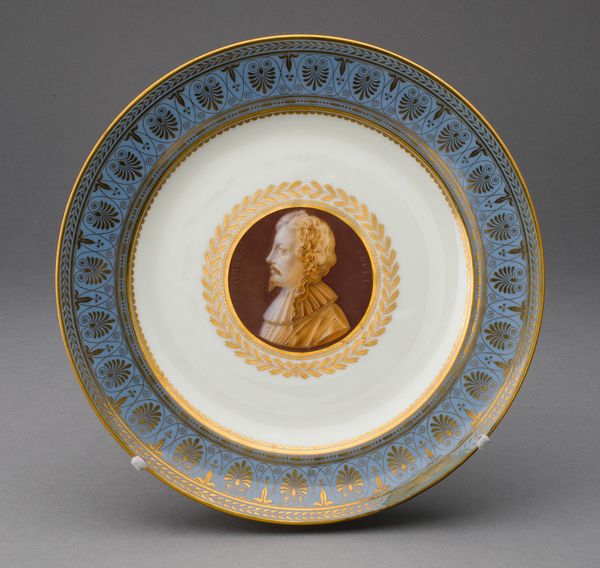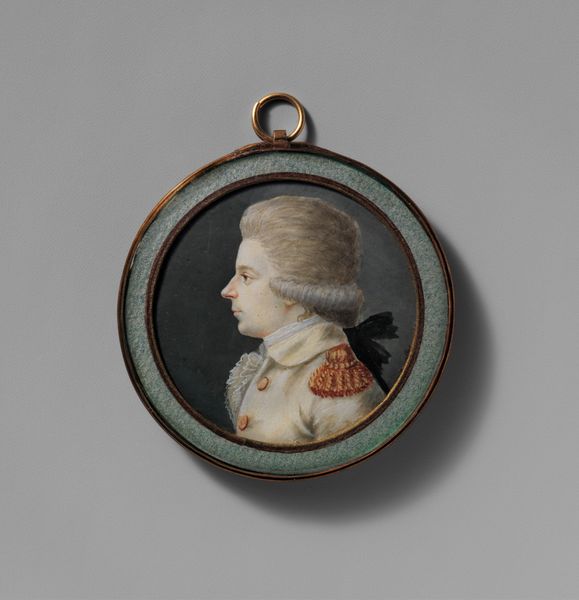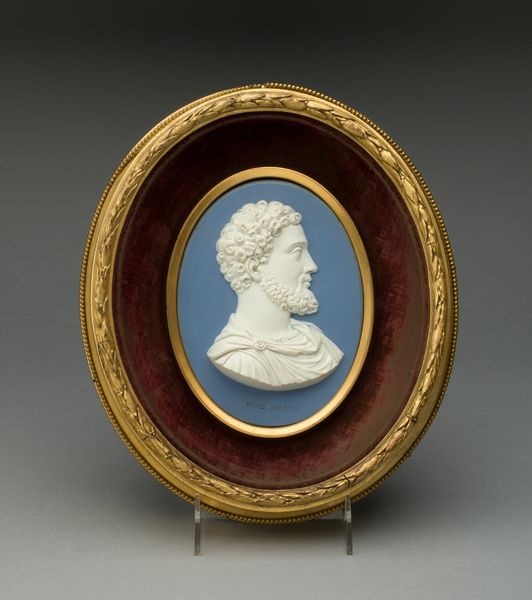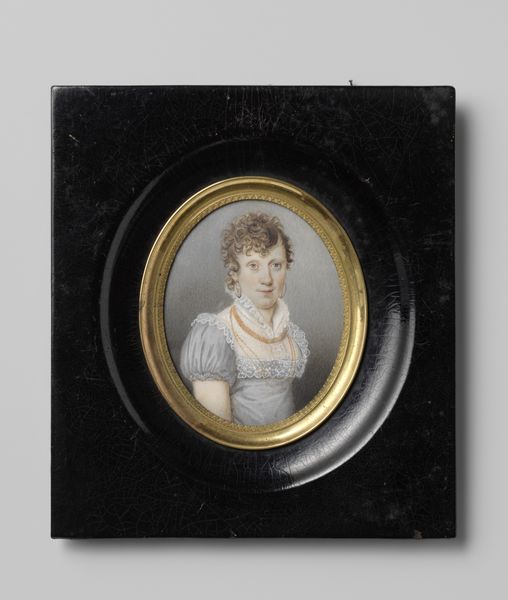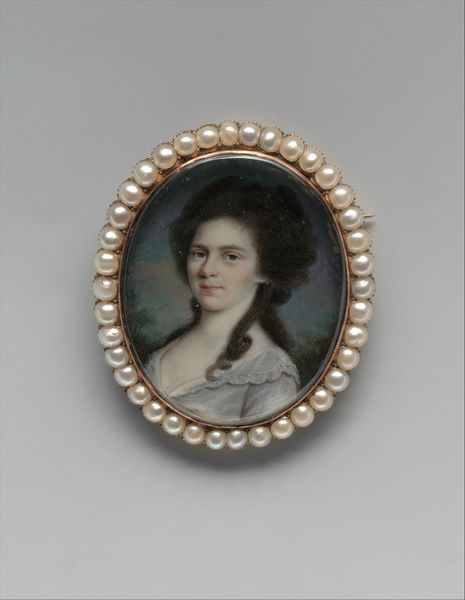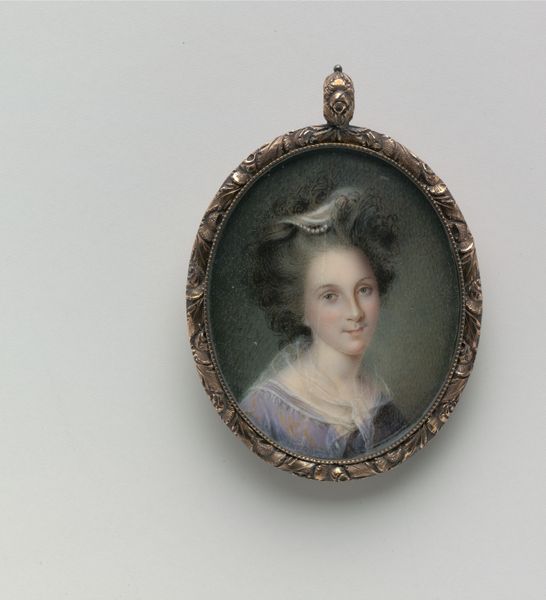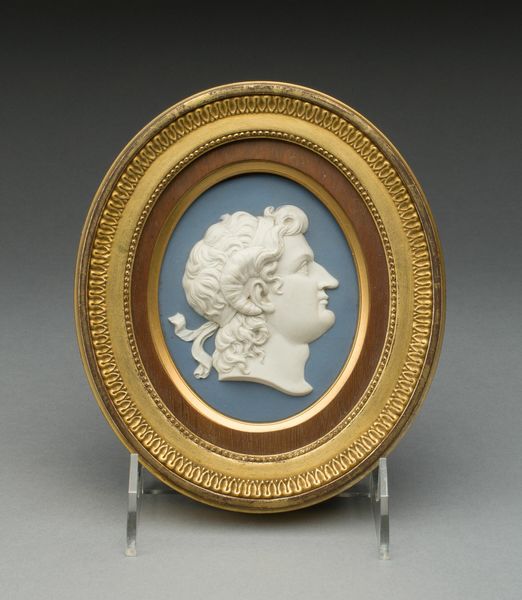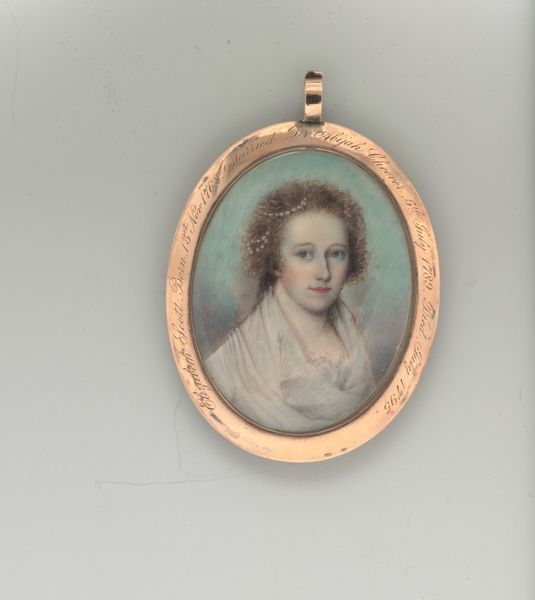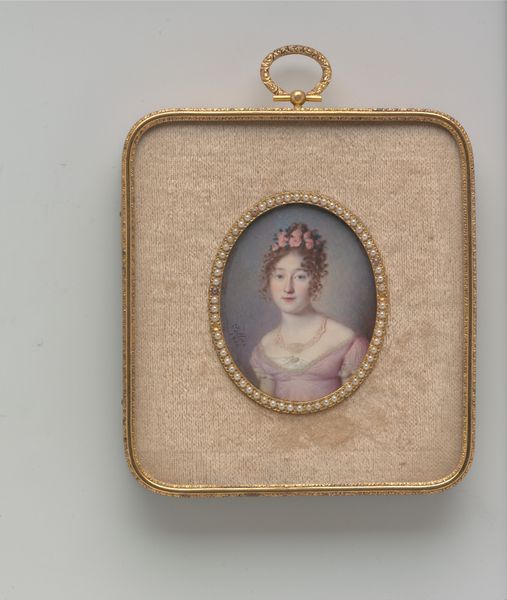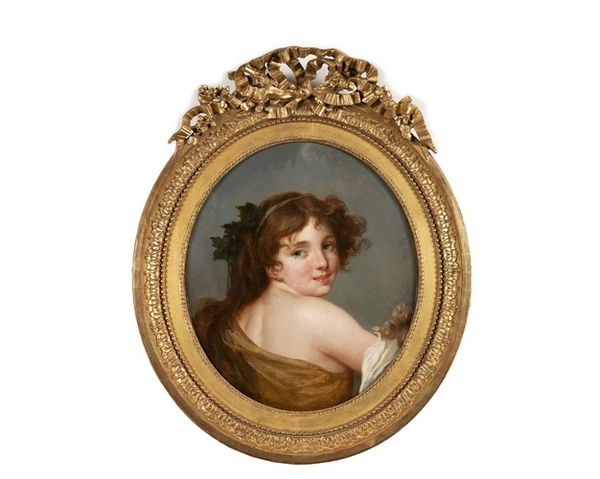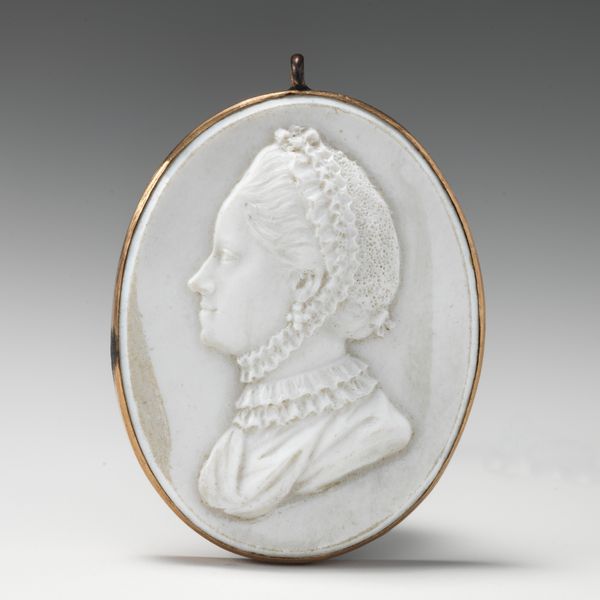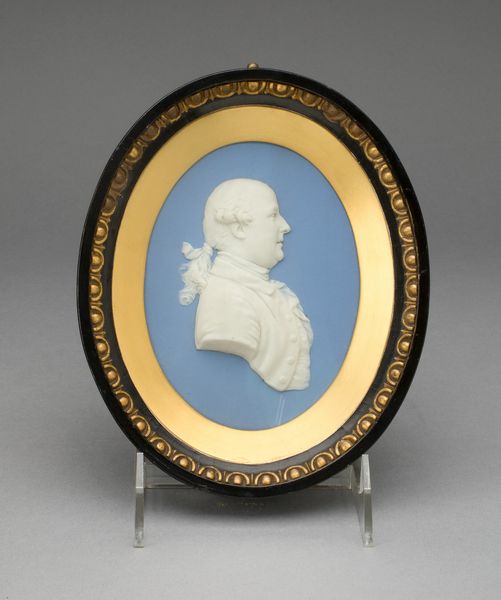
Dimensions: Diam. 9 in. (22.9 cm)
Copyright: Public Domain
Editor: Here we have a ceramic plate from between 1770 and 1800, portraying Benjamin Franklin. It's… an interesting choice to put a portrait on a plate. It gives the artwork a strange sense of domesticity. What's your interpretation of this piece? Curator: It's fascinating how the Rococo style, often associated with the aristocracy, is used to depict Franklin, a figure linked to democratic ideals. The placement of his image on a ceramic plate brings up questions of accessibility and the "democratization" of portraiture. Consider the context of the late 18th century – what does it mean to reproduce and circulate his image in this way? Editor: So, is it trying to make him… relatable? More of an everyday figure? Curator: Exactly. It's a way of bringing the political into the domestic space. How might the production and consumption of such an object impact the perception of Franklin and the values he represented? Editor: It's almost like early propaganda, framing him in a specific way for the public. Curator: Precisely! Think about who owned these plates. Were they used, displayed, or kept as collector's items? And how did the choice of ceramic – a breakable, everyday object – play into the message? Editor: That makes you wonder about the statement being made about power and fragility at the time. Thank you for shining light on these aspects. Curator: Indeed! By thinking critically about the intersection of art, history, and society, we gain deeper insight into the values and beliefs of the time and, perhaps, our own.
Comments
No comments
Be the first to comment and join the conversation on the ultimate creative platform.

